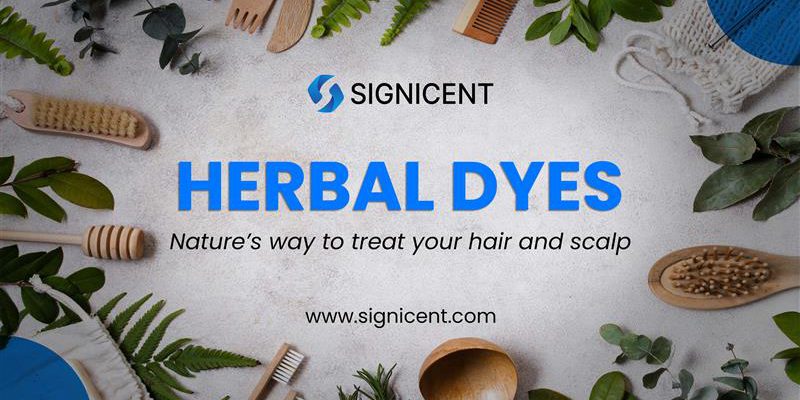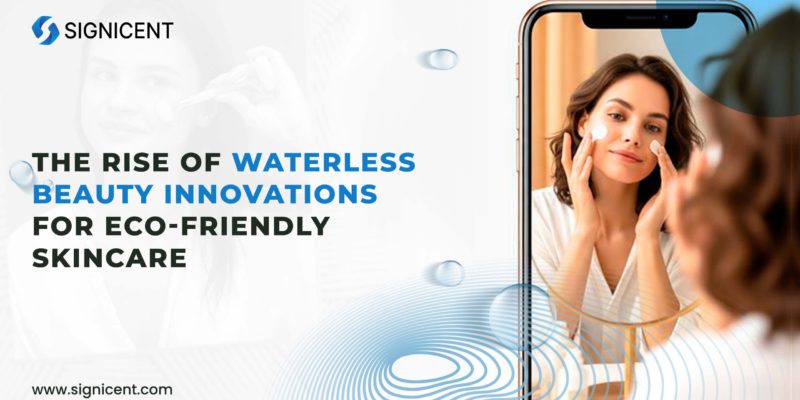Introduction: Why are Herbal Hair Dyes Gaining Popularity?
In a world where personal care meets nature, herbal hair dyes are making a comeback. But why has this trend picked up? The rising concerns over scalp irritation, chemical-induced hair damage, and long-term side effects of synthetic dyes are pushing consumers toward natural alternatives. Hair dyeing is not just about changing color; it’s about care and protection. As more people become conscious of what they put on their hair and scalp, the herbal dye market is booming.
Can natural dyes truly replace chemical ones? What are the secrets behind achieving long-lasting, vibrant colors using plant-based ingredients? Let’s dive into the essential elements of herbal hair dyes and their benefits.
Signicent’s Technology Scouting team researched herbal hair dyes using botanical extracts to offer scalp-friendly, non-toxic coloring solutions, promoting hair nourishment, color retention, and chemical-free alternatives.
Why Is Hair Health a Growing Concern?
Hair fall, dryness, and sensitivity ever wondered why these issues are so prevalent today? From environmental stressors to chemical treatments, modern lifestyles have taken a toll on hair and scalp health. Many hair dyes contain ammonia, hydrogen peroxide, and paraphenylenediamine (PPD) substances known to cause scalp irritation, burning sensations, and even allergic reactions.
Day-to-Day Challenges with Common Hair Dyes
Scalp Irritation: Do you get burning sensations after dying your hair? Chemicals such as ammonia, hydrogen peroxide, and PPD are frequently responsible.
Hair Damage: Common difficulties include color fading, inconsistent application, and weakening hair strands.
Allergic Reactions: Some people are uncomfortable with chemical dyes because they cause redness, itching, and irritation.
Environmental Impact: Many synthetic colors contain non-biodegradable elements, which contribute to pollution.
Technology Gap Analysis identifies missing technological capabilities, helping companies close innovation gaps, optimize performance, and align with market trends to maintain competitive advantages and meet client objectives.
Few novel remedies
Herbal hair dyes offer a chemical-free coloring experience while providing essential scalp protection. Infused with nature’s bounty, these dyes use plant-based ingredients that soothe, hydrate, and strengthen hair strands.
Each year Signicent provides consultancy to hundreds of organizations to help transform their innovations to value.
Key ingredients used in herbal hair dyes:
- Henna: A natural colorant that adds rich brown and auburn tones. It also strengthens the hair and improves scalp health.
- Indigo: Provides dark shades like black and brown while protecting the hair from dryness.
- Amla (Indian Gooseberry): Rich in antioxidants, it promotes scalp health and reduces inflammation.
- Aloe Vera: Known for its hydrating properties, it soothes the scalp and maintains moisture balance.
The strategy integrates safety measures and technology intelligence to deliver scalable, cost-effective hair dye solutions, ensuring efficacy, colorfastness, and sustainability, aligned with client goals.
Hair Dyes have additives
While herbal dyes are beneficial, they also rely on novel additives like solvents, surfactants, and auxiliaries to achieve stability, better dye penetration, and color longevity. These additives ensure that the dye stays on hair longer without causing damage to the scalp. But what exactly do these components do?
Essential Additives and their function:
- Surfactants (Decyl Glucoside): Help spread the dye evenly across the scalp and hair.
- Solvents (Propylene Glycol): Ensure effective mixing and enhance scalp comfort by balancing moisture.
- Auxiliaries (Ethanolamine): Maintain pH stability, ensuring the dye penetrates without irritating the scalp.
These ingredients are carefully balanced to reduce itching and burning sensations during application, offering a pain-free experience.
Technology monitoring identifies the latest trends in herbal dyes, tracks eco-friendly innovations, and ensures compliance with market standards, boosting product quality, safety, and market competitiveness.
Reducing Scalp Inflammation: How Do Herbal Dyes Help?
Scalp inflammation is a common complaint among people who use chemical hair dyes. Herbal dyes provide a safer alternative, but how do they soothe inflammation?
- Aloe Vera and Chamomile extracts act as natural anti-inflammatory agents, calming any redness or irritation.
- Glycerin (used as a humectant) locks in moisture, preventing dryness as a major cause of itching.
- pH-stable solvents ensure the dye interacts smoothly with the scalp, reducing discomfort.
These solutions not only improve the dyeing process but also promote scalp health in the long term.
Innovative Formulations for Dye Stabilization:
The stability of hair dyes depends heavily on pH levels and storage conditions. A carefully designed formula ensures that the dye remains effective throughout its shelf life and offers long-lasting results on hair. Herbal dyes incorporate ingredients like propylene carbonate and isopropyl alcohol, which enhance dye stability by preventing oxidation and keeping the formula intact.
Why is pH Stability Important?
Maintaining the right pH ensures that the dye binds effectively to the hair shaft. Herbal dyes typically have a balanced pH (between 4.5 and 5.5), which is ideal for maintaining scalp health and preventing irritation.
Market assessment and valuation help clients position herbal dyes competitively, identifying market trends, pricing strategies, and growth opportunities for better product differentiation and profitability.
Market Research: Demand for Herbal Hair Dyes Solutions
As consumers grow increasingly conscious about chemical-free options, the market for herbal dyes is expanding rapidly. As per Signicent’s Market Research, the global Herbal Dyes Market is projected to grow at a (CAGR) of over 6.4% by 2030. The market is expected to reach values within the ranges detailed below.

Key Players in the Herbal Hair Dyes Market
Several major companies are leading the shift toward natural hair care solutions:
These companies are investing heavily in research and innovation to meet consumer expectations for eco-friendly, scalp-friendly products.
How Signicent Supports Innovation in the Hair Care Industry
At Signicent, we assist companies in scouting new technologies, analyzing the patent landscape, and identifying technology gaps in the hair care sector. Our technology scouting services uncover innovative formulations and advanced ingredients that improve hair dye performance and consumer satisfaction.
Through technology landscape analysis, we provide insights on novel surfactants, pH stabilizers, and anti-inflammatory additives, helping our clients develop cutting-edge solutions. With a focus on scalp-friendly technologies, Signicent ensures that companies stay ahead in the competitive hair dye market.
Conclusion: A Future Rooted in Natural Care
Herbal hair dyes are more than a trend—they represent a shift towards healthier, sustainable beauty solutions. With scalp-soothing ingredients, novel additives for stability, and eco-conscious formulations, herbal dyes offer a perfect balance of care and color. As major industry players continue to explore plant-based solutions, consumers can look forward to safer hair coloring options that nourish both their hair and the planet. Whether it’s color vibrancy, scalp comfort, or long-term protection, herbal hair dyes are setting a new standard in hair care.
About Signicent LLP
We assist businesses globally in their technology innovations, R&D, new product development, patents, valuation, product commercialization & market research needs.
Services Offered:
- Patent Landscape
- Patent Portfolio Analysis
- Patent Invalidity Search
- Patent Licensing Services
- Freedom to operate (FTO)
- Chemical Structure Search
- Design Patent Search
- Technology Scouting
- Technology Landscape Analysis
- Technology gap analysis
- Technology Intelligence
- Market Research
- Bio Sequence Search
- Manufacturers Search/ Supplier search
Elevate your Innovation and Research with Signicent’s cutting edge approach to assist you with Technology and Market related matters alongside the IP aspect of the analysis.

